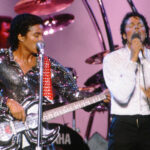Every town has its unsettling tales, whispers of local legends that send shivers down your spine. For those residing on Elm Street, the legend is chillingly real: Freddy Krueger. This name alone conjures images of a disfigured figure, a demonic entity born from vengeance. Krueger, in the lore, was a child molester, a monster who met a fiery end at the hands of enraged parents. But death was not the end for Freddy; it was a twisted beginning. He returns, not in the flesh, but in the ethereal realm of nightmares, preying on the teenagers of Elm Street. Nancy (Heather Langenkamp) becomes our protagonist, tormented by recurring, terrifying dreams. In these nightmarish visions, she’s relentlessly pursued through the shadowy depths of a boiler room by a scarred man – the very place where he committed his heinous crimes. Initially dismissing these as mere bad dreams, the horrors become starkly real when one of Nancy’s friends suffers a brutal, inexplicable death in their sleep.
As the nightmares intensify, Nancy’s boyfriend, Glen (a young Johnny Depp), confesses to sharing similar chilling experiences. Together, they delve into the grim history of Krueger’s demise, uncovering a dark truth. Realizing they are facing something far more sinister than just bad dreams, Nancy and Glen make a pact: to stay awake, to fight back against the encroaching terror. Their plan is audacious, to pull Krueger from the dream world into reality, where they believe they can finally destroy him.
Wes Craven, the mastermind behind this terrifying tale, drew inspiration from a disturbingly real phenomenon. Reports circulated of individuals across the globe mysteriously dying in their sleep. Craven masterfully blended this unsettling reality with elements of dark fantasy, giving birth to “A Nightmare on Elm Street,” a film that would not only become iconic but also redefine the landscape of horror films. Much like “Halloween” before it, “A Nightmare on Elm Street” spawned a legion of sequels and imitators, yet none could capture the original’s terrifying essence.
The genius of this film lies in its reliance on psychological terror, a stark contrast to cheap jump scares and gratuitous gore. Building upon the Hitchcockian suspense revitalized by John Carpenter’s “Halloween” in 1978, “A Nightmare on Elm Street” delves into the unsettling mystery of dreams. Dreams, a universal human experience, become the gateway to unimaginable horror. A doctor in the film aptly notes the enigma of dreams – their origin, their purpose – a mystery that deepens the film’s chilling effect. This exploration of the unknown, the vulnerability we face in our sleep, is what makes the film resonate even today. While some special effects might appear dated to modern audiences, “A Nightmare on Elm Street” prioritizes plot and character development over excessive gore, a rarity in the horror genre and a testament to its enduring quality.
The sequels, however, took a different path. Freddy Krueger morphed into “Freddy,” a less menacing figure. He gained more screen time, his makeup softened, and he began delivering dark humor alongside his terror. His demonic cackle became almost cartoonish compared to the original film. In the 1984 “Nightmare,” Freddy is a specter, a lurking presence. We glimpse his glove with razor fingers, his fedora, his striped sweater, a shadow in the darkness. Even when he’s shown, Craven’s camera work obscures a clear view, maintaining an aura of terrifying mystery. Decades later, this mystery is gone. Freddy’s face is plastered across merchandise, his persona a pop culture icon. But in 1984, Freddy was an enigma, a terrifying unknown, far from the joke-cracking figure he would become.
The acting in “Film Elm Street,” while not universally praised, serves its purpose. Heather Langenkamp portrays Nancy with a relatable vulnerability, even if her performance isn’t considered award-winning. Johnny Depp, in his debut film role, hints at his future talent, despite delivering somewhat stereotypical teenage dialogue. However, Robert Englund’s portrayal of Freddy Krueger, despite limited screen time in the original, is undeniably the film’s acting highlight. Ironically, Freddy’s scarcity amplifies his terror, proving less is truly more in this case.
While Wes Craven’s direction in “A Nightmare on Elm Street” might not reach the stylistic heights of “Halloween,” the film stands as a significant horror achievement. Some argue its reputation has become slightly overrated over time, especially when compared to “Halloween.” Yet, in the context of 1980s horror, amidst a sea of generic slasher films like “Friday the 13th,” “A Nightmare on Elm Street” shines as a smarter, more inventive horror experience. Despite minor flaws, its clever premise, surprise ending, and the creation of one of cinema’s most enduring villains solidify its place in horror history.
Ultimately, “A Nightmare on Elm Street” is Nancy’s story. The narrative centers on her struggles, her nightmares, her fight for survival. While the film’s climax, with its booby traps and slightly cartoonish Freddy chase, might feel somewhat less impactful, the film as a whole masterfully blends horror, thriller, and fantasy. It taps into the primal fears associated with sleep and dreams, transforming these everyday experiences into a landscape of terror. Craven’s ability to materialize this intangible fear is undeniably his cinematic triumph. “A Nightmare on Elm Street” may not be a flawless masterpiece, but for horror aficionados, it’s essential viewing, and even for those less inclined towards horror, its intriguing elements offer a compelling cinematic experience.

